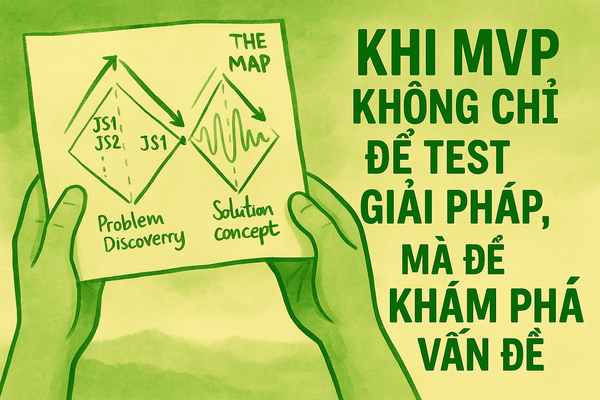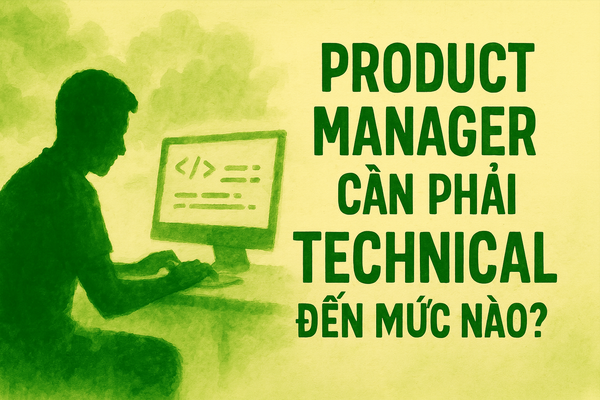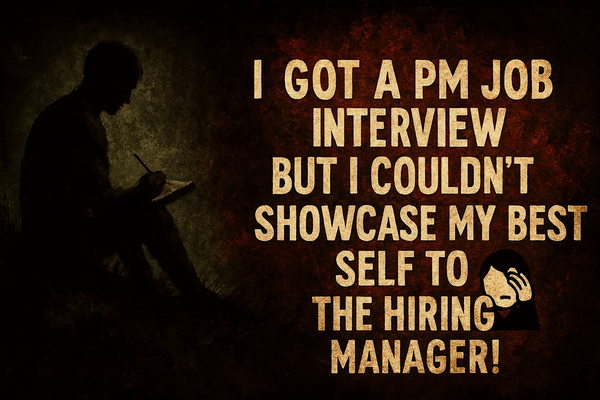#42 - Sự sáng tạo bắt đầu từ ý định
Bài viết này xoay quanh một khía cạnh trong uốn sách Creativity, Inc. kể về hành trình hình thành và phát triển của hãng phim Pixar, mà mình thấy liên quan đến việc làm sản phẩm và sáng tạo

Chào mọi người 👋, dạo gần đây mình ít ra bài viết mới hơn, vì cảm thấy bản thân có nhiều thứ muốn làm, đào sâu và tích lũy rồi mới trở lại chia sẻ. Mình không muốn tự ép bản thân phải viết chỉ vì để ra bài viết mới, mà mục đích của newsletter này là chia sẻ những thứ mình cảm thấy thật sự mang lại giá trị theo chuẩn mực của mình.
Bài viết này xoay quanh nội dung của cuốn sách Creativity, Inc. kể về hành trình hình thành và phát triển của hãng phim Pixar. Thông qua câu chuyện này, cùng với các mẫu truyện khi làm việc cùng Steve Jobs, tác giả đưa ra nhiều góc nhìn hữu ích để quản lý một tổ chức sáng tạo. Mình sẽ chia sẻ về một khía cạnh cụ thể mà mình thấy khá liên quan đến việc làm sản phẩm và trải nghiệm cá nhân.
Nội dung tương tác
Đâlà một interactive prototype để mọi người có thể khai phá các ý niệm chính trong bài viết theo một hình thức giống như Khu Vườn hơn là một Dòng Suối (như cấu trúc của bài blog này). Mình để nó ở đầu vì bản thân cũng hay thích tương tác với kiến thức như thế này ở trong Obsidian. Nhưng nếu bạn cảm thấy không quen, thì vẫn có thể đọc bài viết ở bên dưới để xem mình triển khai các ý niệm này như thế nào nhé!
Creativity Begins with Intention - Interactive Notes
Introduction: The Power of Intention
From the book Creativity, Inc. by Ed Catmull, there's a profound insight about the creative process: intention (ý định) is crucial if we want to create something original and innovative.
This note collection explores how intention operates in creative work through three lenses:
These principles apply directly to product management, innovation, and creative leadership. Understanding how intention shapes creative work can transform how we approach challenging projects.
Intention is Essential for Originality
True originality requires breaking arbitrary rules and conventions that limit progress. This is why strong intentions matter—they give you the conviction to challenge established norms.
Originality requires breaking arbitrary rules. When your intentions are clear and strong, they provide the courage to challenge established norms.
This explains why Steve Jobs's "reality distortion field" was so effective: it wasn't merely about persuasion, but about having unwavering intentions that allowed him to challenge seemingly immovable constraints.
The Think Different campaign exemplifies how strong intentions can lead to breaking bureaucratic processes that would have stifled innovation.
Connected concepts:
Early Creativity is Fragile
Creative ideas in their early stages are rarely beautiful or fully formed. Pixar calls these early drafts "ugly babies" – they're awkward, vulnerable, and unrefined.
Early creative ideas need protection and nurturing; they're easily dismissed by those who lack the patience to see their hidden potential.
When intentions aren't yet solid and strong, creative work becomes especially vulnerable to criticism. This is why great creative leaders protect early-stage ideas, giving them time to develop.
In startup environments, this principle is crucial. You need a certain "insanity" to believe your startup will succeed when statistical odds suggest otherwise. Many will cite reasons your idea won't work, but you only need one compelling reason why it will.
Connected concepts:
Intention Beyond Simple Mantras
Strong intentions aren't encapsulated in simple slogans or demands. A manager who claims "talented people must make unreasonable demands" might be missing the point about intention.
Being "unreasonable" only creates value when it stems from a clear intention to foster creativity and improvement—not from arbitrary pressure.
If the intention behind "unreasonable" behavior isn't to create value, then the behavior is likely just... unreasonable.
This nuance matters for creative leaders. It's not about adopting Steve Jobs's exact behaviors, but understanding the intentions that drove his seemingly unreasonable approaches. Few people should emulate Jobs exactly, but many can learn from his unwavering focus on intention.
Connected concepts:
Pixar's Creative Journey
Pixar's story exemplifies how clear intention can drive consistent creative breakthroughs over decades. Their innovations weren't accidental—they stemmed from intentional approaches to storytelling and technology.
Pixar's Breakthrough Films:
- Toy Story (1995): First fully computer-animated feature film, launching a new era in animation
- Finding Nemo (2003): Developed complex graphics technology to create realistic oceanic environments
- Up (2009): First animated film to open the prestigious Cannes Film Festival
- Inside Out (2015): Creatively personified emotions in a way that resonated deeply with audiences
These successes came from Pixar's intentional approach to creative work, including:
- Protecting "ugly babies" (early creative ideas)
- Creating environments where people could share honest feedback
- Maintaining unwavering quality standards
- Balancing technical innovation with emotional storytelling
Ed Catmull's book Creativity, Inc. details how intentional leadership helped Pixar maintain its creative edge even as it grew from a small studio to an animation powerhouse.
Steve Jobs and Breaking Rules
Steve Jobs's "reality distortion field" is often viewed critically—as if he merely used charisma to bend reality to his will. But a more positive interpretation exists:
Jobs consistently challenged limits and arbitrary conventions that hindered progress. His "unreasonableness" made him influential precisely because it was driven by clear intention.
When you intend to change the world, you must break unreasonable rules and accept that you might upset those who've grown comfortable with existing limitations.
This explains why Jobs was effective at driving innovation—his unreasonableness wasn't random but directed by strong intentions to create revolutionary products.
The Think Different campaign story shows how Jobs's rejection of bureaucratic processes led to one of the most iconic marketing campaigns in history.
Connected concepts:
Think Different Campaign
In 1997, when Steve Jobs returned to Apple, the company was just 90 days from bankruptcy. Apple had a cumbersome process for selecting a new advertising agency, with over 20 agencies submitting ideas, narrowed to 12 finalists for meetings—a bureaucratic process that wasted precious time.
Jobs immediately scrapped this process and contacted Lee Clow from Chiat agency, with whom he had worked for 8 years at NeXT. In their first meeting, Jobs candidly admitted Apple's products were terrible and they needed new ideas immediately.
Chiat, understanding Jobs's character and Apple's situation, returned with two concepts:
- A scenario describing what would happen if Apple disappeared (accurate but pessimistic)
- The "Think Different" campaign about "crazy ones" who change the world
Jobs chose Chiat because they understood his intention: no bureaucracy, focus on the core problem, and fast action. He trusted a small, talented, creative team over cumbersome processes.
His decision to cut a process that had become Apple's standard was bold and likely displeased many, especially other agencies that would have had a chance to bid. But this decision led to an iconic campaign that became a symbol of Apple's remarkable revival.
When your intentions are clear and strong, they help you break through limitations or rules that might otherwise block breakthrough innovation.
Ugly Babies: Nurturing Early Ideas
Pixar has a vivid metaphor for early creative ideas: they call them "ugly babies." These initial drafts aren't small versions of the beautiful creations they might become. They're awkward, vulnerable, and unformed.
Early creative ideas need time, patience, and nurturing to develop. They're easily undervalued by those lacking the patience to see their hidden potential.
This metaphor applies to all creative work, including product development. Initial prototypes, first drafts, and early concepts often look rough and uninspiring to outsiders. They need protection until they can develop enough to stand on their own merits.
This connects to why critics have a special responsibility when evaluating new and innovative work—the world is often unkind to new talents and creations.
Connected concepts:
The Role of Critics
One of the most touching moments in Pixar's films comes from Ratatouille, when the feared food critic Anton Ego delivers his review of Gusteau's restaurant run by Remy, the rat chef.
"In many ways, the work of a critic is easy... We thrive on negative criticism, which is fun to write and to read.
But the bitter truth we critics must face is that, in the grand scheme of things, the average piece of junk is probably more meaningful than our criticism designating it so.
But there are times when a critic truly risks something, and that is in the discovery and defense of the new. The world is often unkind to new talent, new creations. The new needs friends."
— Anton Ego (Ratatouille)
This monologue, written by Brad Bird, captures a profound truth about creation and criticism. Even modest creative attempts carry more meaning than the criticism aimed at them. Yet critics play a vital role when they defend and nurture promising new ideas.
For product managers and creative leaders, this suggests a balance: maintain high standards while protecting early-stage ideas long enough for them to mature and reveal their potential.
Connected concepts:
Product Manager as Protector
Product managers have a crucial role in identifying and protecting promising but underdeveloped ideas. When engineers or designers present ideas that seem naïve, effective PMs explore the intentions behind them.
Sometimes these intentions reveal perspectives you hadn't considered, leading to creative solutions. Sometimes the way ideas are framed doesn't reflect the brilliance of the underlying intention.
The author has witnessed many instances where engineers proposed solutions the author hadn't considered. Focusing on intention rather than the exact form of expression leads to better outcomes.
This protection role is especially important in startups, where a certain "insanity" is needed to believe in success despite statistical odds. You'll hear countless reasons why your startup will fail, but you only need one compelling reason why it will succeed.
Product Manager's Dual Role:
- Protect early-stage creativity from premature criticism
- Help refine and develop promising ideas into valuable solutions
The best PMs know when to "discount" opinions that don't stem from an intention to help find direction for the product or don't come from people with the capacity to provide helpful guidance.
Connected concepts:
Protecting "ugly babies" Early creativity is fragile The critic's responsibilityBeyond "Unreasonable" Demands
To critically examine when "unreasonableness" is actually counterproductive, consider this scenario: A manager frequently uses the phrase "talented people must make unreasonable demands" to pressure employees into working harder to meet targets handed down from the CEO.
Making "unreasonable demands" without clear purpose or compelling rationale only exhausts employees and destroys motivation. The "unreasonableness" itself isn't inherently valuable—especially when it stems from arbitrary pressure.
When intention isn't focused on creating value, "unreasonable" behavior is likely just... unreasonable.
Rather than focusing on behaviors like "being unreasonable," it's more helpful to focus on intentions. This allows for situation-specific assessment of which behaviors are most effective. Few people should emulate Jobs exactly, but many can learn from understanding the intentions behind his approaches.
Connected concepts:
Further Reading
Books:
- Creativity, Inc. by Ed Catmull with Amy Wallace - The primary source for these notes, sharing insights from Pixar's journey
- To Pixar and Beyond by Lawrence Levy - Provides additional context on Pixar's business development
- Steve Jobs by Walter Isaacson - Detailed account of Jobs's life and working style
Pixar không chỉ đơn thuần là một hãng phim hoạt hình, họ còn nổi tiếng với khả năng tiên phong và sáng tạo đáng kinh ngạc:
- Toy Story (1995): Bộ phim hoạt hình đầu tiên được sản xuất hoàn toàn bằng công nghệ kỹ thuật số (CGI), mở ra một kỷ nguyên mới cho ngành phim hoạt hình thế giới.
- Finding Nemo (2003): Thách thức kỹ thuật để tạo ra môi trường biển chân thực, Pixar đã phát triển những công nghệ đồ họa phức tạp chưa từng có, giúp câu chuyện gần gũi và sống động hơn bao giờ hết.
- Up (2009): Bộ phim hoạt hình đầu tiên mở màn Liên hoan phim Cannes danh giá, minh chứng rõ ràng rằng phim hoạt hình cũng có thể sâu sắc, giàu cảm xúc và dành cho cả người lớn lẫn trẻ em.
- Inside Out (2015): Được ca ngợi vì đã táo bạo hóa thân các cảm xúc bên trong con người một cách sáng tạo, thể hiện khả năng kể chuyện thông minh và cảm động của Pixar.
Những thành tựu này cho thấy Pixar luôn duy trì được sự sáng tạo bền bỉ, không ngừng thử nghiệm, vượt qua ranh giới cũ để tạo ra những tác phẩm chạm đến trái tim người xem trên toàn thế giới.

Trong những ý tưởng tuyệt vời của sách, có một điều mà mình thấy đặc biệt thú vị sau nhiều lần đọc lại: ý định (intentions) là thứ rất quan trọng nếu chúng ta muốn tạo ra một sản phẩm hoặc một thứ gì đó sáng tạo và nguyên bản.
Ý định quan trọng vì sự nguyên bản luôn đòi hỏi phá vỡ những nguyên tắc tùy tiện
Một ví dụ rõ nét là câu chuyện về "trường bóp méo hiện thực" (reality distortion field) của Steve Jobs. Người ta thường nhắc đến thuật ngữ này với hàm ý rằng Steve Jobs luôn dùng khả năng diễn thuyết sắc sảo của mình để "bẻ cong" mọi thứ theo ý ông. Tuy nhiên, có thể nhìn nhận câu chuyện theo một cách tích cực hơn: ông liên tục thách thức các giới hạn và những quy trình, chuẩn mực tùy tiện đang cản trở sự tiến bộ. Đúng là Jobs rất "không hợp lý" (unreasonable), nhưng chính sự phi lý đó đã làm ông trở nên có sức ảnh hưởng lớn lao. Nếu bạn muốn thay đổi thế giới, chắc chắn bạn phải phá vỡ những nguyên tắc vô lý và có thể sẽ phải chấp nhận làm mất lòng những ai đã quen với sự tồn tại của chúng.



